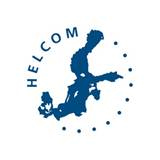
Land-Based Pollution Group to address major regional issues in 3-day meeting
Seeking further solutions for less nutrient inputs to the Baltic Sea
15 May 2014
Better sewage sludge handling, which would improve phosphorus recycling and reduce its losses to the Baltic marine environment, as well as the monitoring results of phosphogypsum waste handling site in Wiślinka, Poland, have been key items in the Meeting of the HELCOM Land-Based Pollution Group (LAND), continuing today in Gdansk, Poland. Since the early 2000s the LAND Group has been meeting yearly, to discuss actions to limit emissions and discharges of nutrients from land-based sources from the Baltic Sea catchment, including transboundary pollution. The Group involves the major regional actors including all coastal governments, EU, HELCOM Observers and other key stakeholders.
The 2013 HELCOM Ministerial Declaration called for sustainable use of nutrients in the Baltic Sea Region. To respond to this call, the Gdansk Meeting 14-16 May is considering the draft HELCOM Recommendation on sewage sludge handling which is being prepared by Germany and Sweden. Waste water treatment sector generates vast amounts of sludge with high nutrient content that could be utilised sustainably with due environmental precautions. Having a set of specific requirements on sewage sludge handling would also respond to the topical issue of nutrient recycling.
“In normal operation of a waste water treatment plant, the generated sewage sludge contains nutrients, micronutrients and particles that can be utilised on arable land for production of crops. Catching phosphorus from waste water is a sustainable way to save nutrient resources for farming. Sludge can be also utilized for energy recovery. Besides, if phosphorus from sewage sludge is not handled properly or collected for reuse, there is a risk of its leaking to the Baltic Sea”, says Leonid Korovin, Chair of HELCOM LAND Group.
The most recent information on phosphogypsum waste handling site in Wiślinka, Poland, was addressed in the Meeting yesterday. The Meeting welcomed the new plans to divert drainage waters from around the phosphogypsum waste stack back to the production cycle at Fosfory Plant in Gdansk that would reduce potential threat of nutrients leakage into the Baltic. The Meeting also invited Poland to submit the environmental review report in English to the Contracting Parties to ease the follow-up of national information provided at the Meeting.
The joint Polish-Finnish samplings in the vicinity of the Wiślinka phosphogypsum dumpsite last year were a follow-up to the implementation of requirements of HELCOM Recommendation 17/6 "Reduction of Pollution from Discharges into Water, Emissions into the Atmosphere and Phosphogypsum out of the Production of Fertilizers".
Following the decision by 2013 Ministerial Meeting to continuously assess potential significant sources of nutrient pollution on land e.g. industries, fur- and fish-farming, and when needed, address them with abatement measures and/or emission limits, the Meeting may consider which sector of industry/source, potentially contributing to nutrient pollution and eutrophication of the Baltic Sea, could be screened in a similar detailed manner than handling of phosphogypsum waste from fertilizer industry. Specific focus would be on the environmental performance and application of Best Available Technologies/Best Environmental Practices (BAT/BEP) for reduction of inputs of nutrients, as well as hazardous substances.
Other items in the intense agenda of the Meeting will be related to pharmaceuticals, concerning national reporting as well as pilot study in St. Petersburg within the HELCOM-EU BASE Project); process towards development of the regional action plan on marine litter; as well as remaining hot spots in the region, among others.
All the documents can be accessed after the Meeting in the Meeting site (LAND 19-2014).


